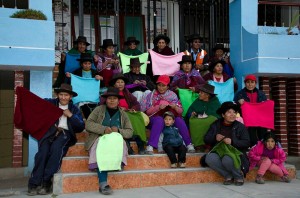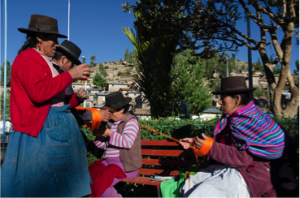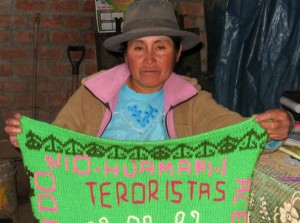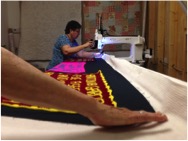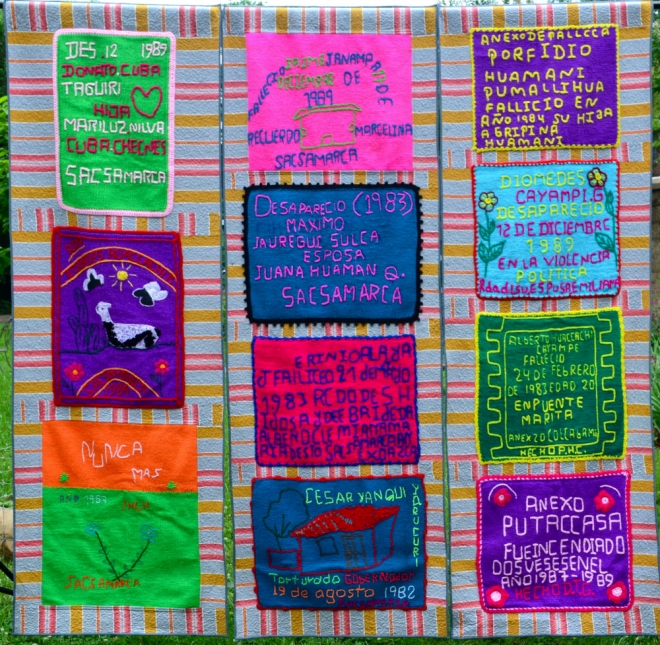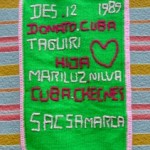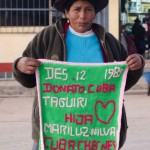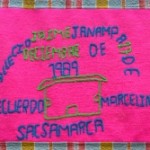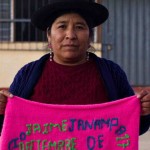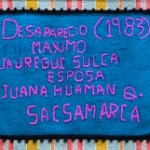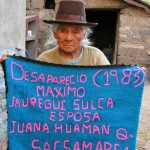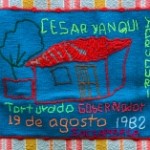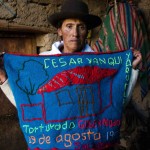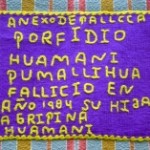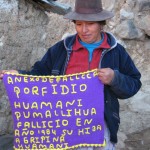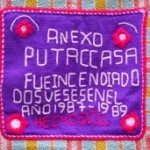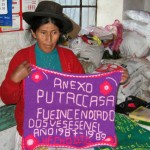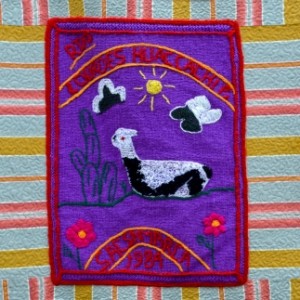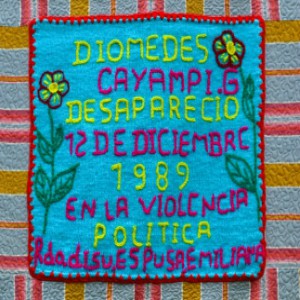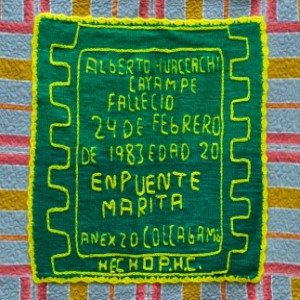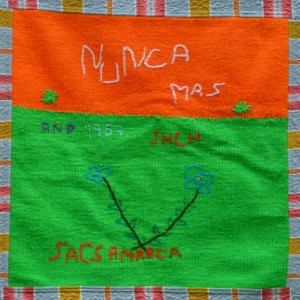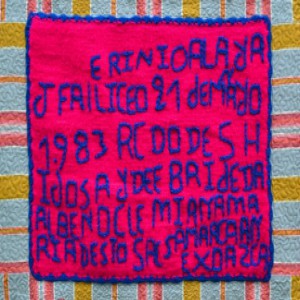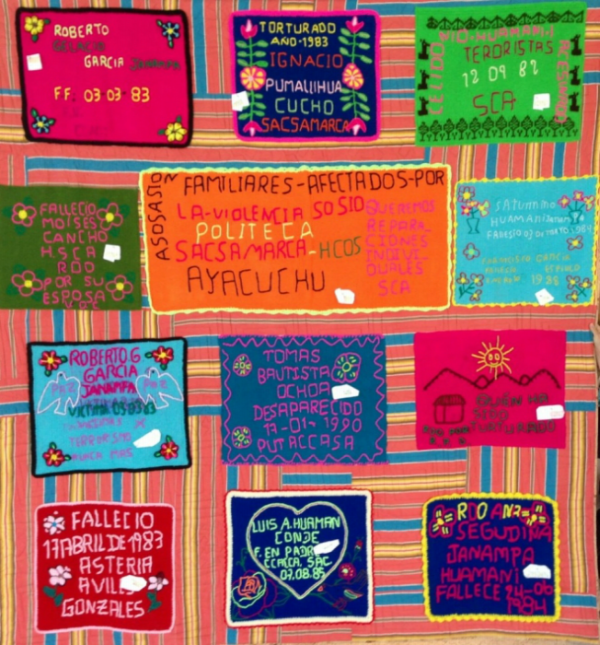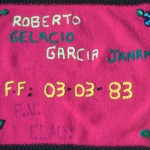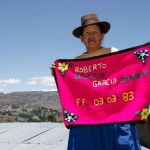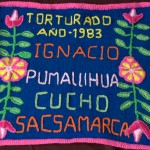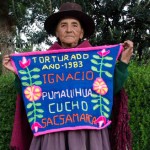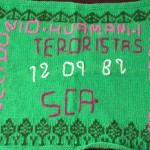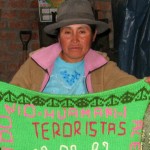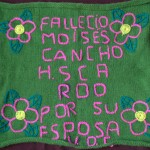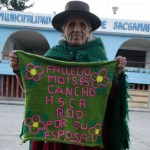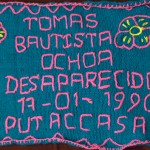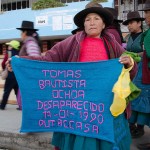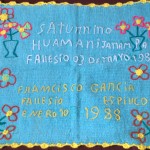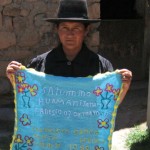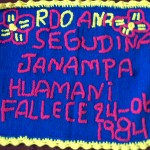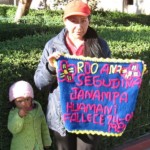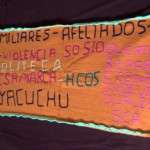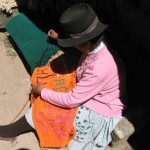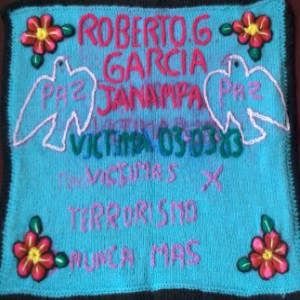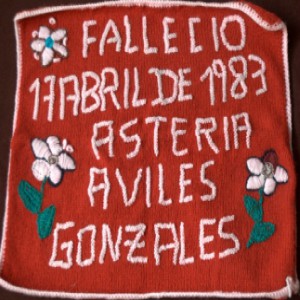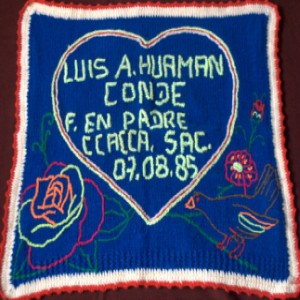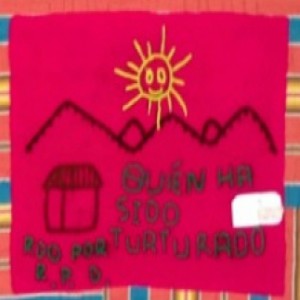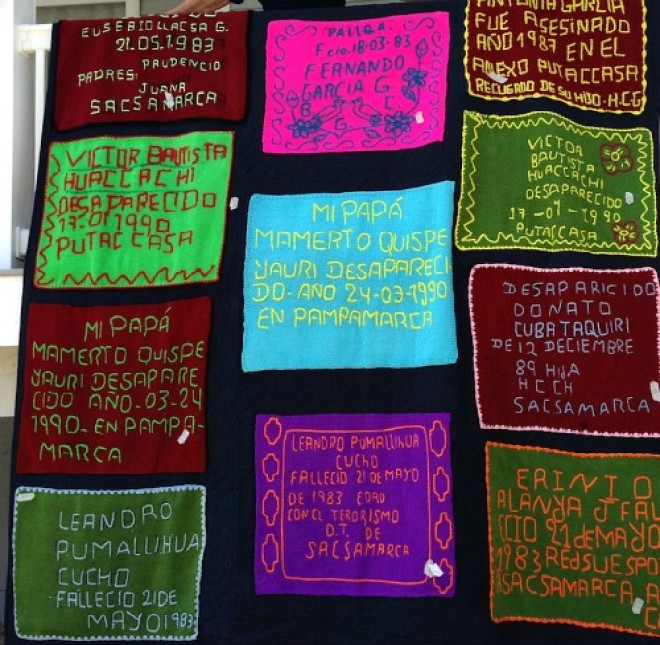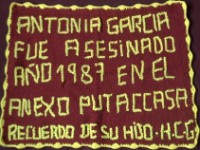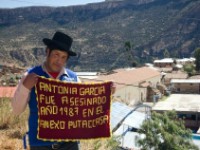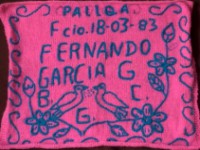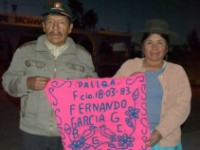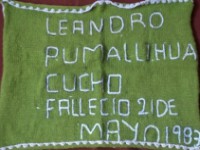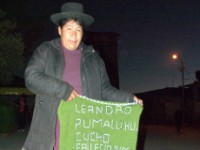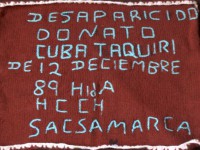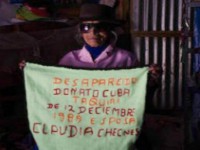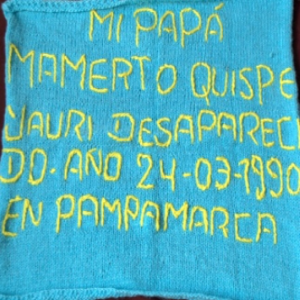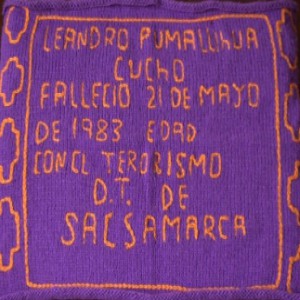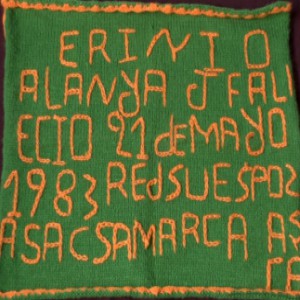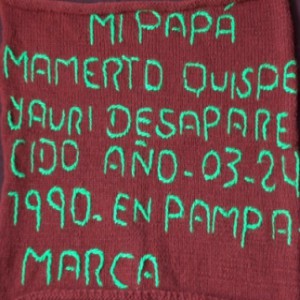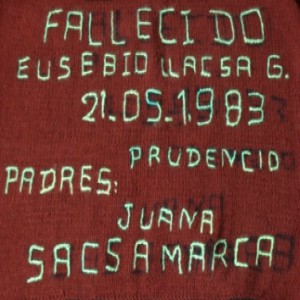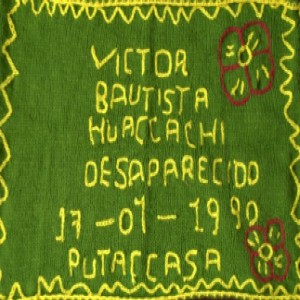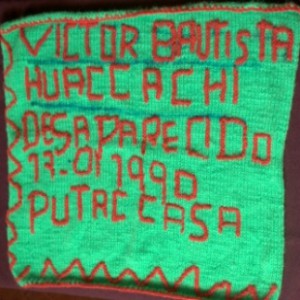The Nunca Más (Never Again) Peruvian Quilts
Background
|
On May 21, 1983, nine villagers from the small market town of Sacsamarca in Southern Peru were killed in an encounter with the Shining Path guerrillas. Sacsamarca was one of the countless communities damaged during Peru’s long and dirty war against terrorism (1980 – 2000), but out of that tragedy has emerged a work of art – the first-ever advocacy quilt from Peru.21 years after the incident at Sacsamarca, the villagers were given a chance to remember through embroidery. AP has long suggested to our Peruvian partner, the Forensic Anthropology Team (EPAF) that EPAF works with stakeholders to produce an advocacy quilt, and in 2014 EPAF took up the challenge. The EPAF team decided to focus on the community of Sacsamarca as an example of villages that was caught in the middle of the vicious war. Some of the villagers died at the hands of Shining Path. Others disappeared and are presumed killed by the military. Still, others perished in confrontations with neighboring villages. AP’s 2014 Peace Fellow, TJ Bradley from American University, coordinated the quilting project for AP, while Percy Rojas Quispe led the EPAF team. Percy and TJ visited Sacsamarca together in June and explained the concept of advocacy quilting to families by showing an AP video on the Bosnian memorial quilts, which had launched AP’s program of advocacy quilting in 2007. TJ described this cross-cultural connection in his blog: “The women of Sacsamarca were captivated by the images of the women of BOSFAM and watched intently as the video flashed on the freezing, bare wall of the municipality. They knew the same pain and confusion that those women were feeling and were reliving their own personal tragedies as they watched the video we projected”. “It was a fascinating connection between the two countries and conflicts that I wasn’t expecting. It was strange that advocacy quilting had arrived to a remote village in the Andes all the way from the aftermath of the Balkans in the 1990s. Unfortunately, the need for advocacy quilts in post-conflict societies still exists due to the tragedies that both these communities have experienced. Hopefully, we have begun a process that will bring the attention to the people of Sacsamarca, and all of Ayacucho, that can make a real change in their lives. Only time will tell, but the connection has been made and we are off and running…”
The Sacsamarca squares were called ‘Nunca Mas” (never again). As with the earlier Bosnian and Guatemala quilts, they commemorate the disappeared through names. But they were also much larger and more colorful. This created a technical challenge for the three American quilters in New Jersey who had volunteered to assemble the squares into quilts. Merry May. Elizabeth Ohlson, and Ginny Cooper, from the South Shore Stitchers Guild, had visited AP’s exhibition at the Noyes Museum, also in New Jersey, and offered to take on a new quilt project. When presented with the Nunca Mas squares, Elizabeth, Ginny and Merry realized that the squares were too “wobbly” to be assembled into a quilt, and would first have to be stabilized and stiffened before they could be attached to each other and to backing. Elizabeth solved the problem by attaching a cotton backing to each square which stuck once it was ironed on. This gave the squares some strength and allowed them to be attached to one another by sashing (inserting a strip of material between the squares). Elizabeth then laid out the attached squares over batting, and finally over the backing. The entire creation was taken over by her friend and fellow quilter, Merry May, who used her long-arm quilting machine to quilt over the spacing material between the squares (photo). They decided not to quilt onto the actual squares. The quilts then went back to Elizabeth and Ginny, who added sleeves and binding. This process was long, frustrating, but also companionable, as the three quilters explain in the AP video. Elizabeth and Ginny almost gave up several times: “There was not a lot of enjoyment,” confessed Elizabeth. “It was hard work.” But she was pleased to have been able to help. “Their story needs to be told and I’m a part of telling that story – that kept me going.” |
|
Merry agreed. She remembered “talking Elizabeth off the ledge multiple times” and insisting that “we can do this.” But she also recalled the time spent talking of innovative approaches and “thinking outside the box.”We are enormously grateful to the South Shore Stitchers Guild for donating material to this project, and for lending us three of their most experienced quilters. As for the quilters – Merry, Elizabeth and Ginny – they are now part of a community that stretches from New Jersey to Peru. It will all come together when their quilts are shown for the first time at the Long Beach Island Foundation exhibition in New Jersey, starting July 19. “It’s humbling. We’re very happy to have been a part of it,” said Merry. |
The First, Second, and Third Nunca Más Quilts
The First, Second, and Third Nunca Más Quilts
The Fourth Nunca Más Quilt
The Fourth Nunca Más Quilt
The Fifth Nunca Más Quilt
The Fifth Nunca Más Quilt

